Next to what can you plant dill?
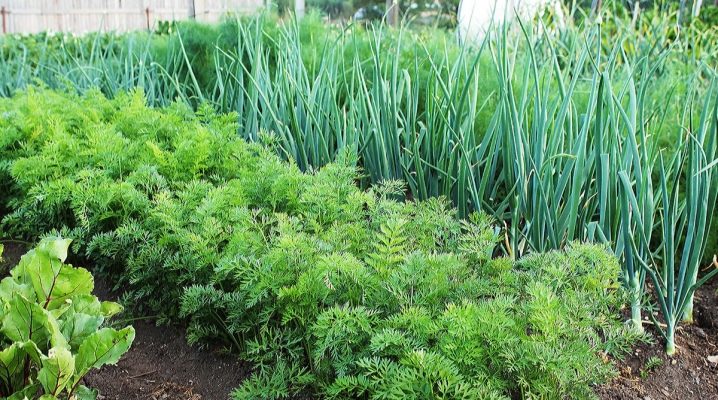
Dill is popular, it is added to pickles and eaten fresh. Usually it is not planted separately, but sown in free places throughout the garden. There are crops that should not be placed next to dill, it can negatively affect growth and yield. Before sowing, it is worth making sure that the plant will be a suitable neighbor.
Useful crops
Dill tolerates coolness well, so it can be sown even in early spring in the open field.... There are even varieties that are planted before winter. The plant loves loose soil with neutral acidity; nitrogenous fertilizers will also be useful.
Often, dill grows on its own, there is nothing to worry about if it is compatible with the crops that are nearby. There are many plants that will benefit from such a neighborhood.
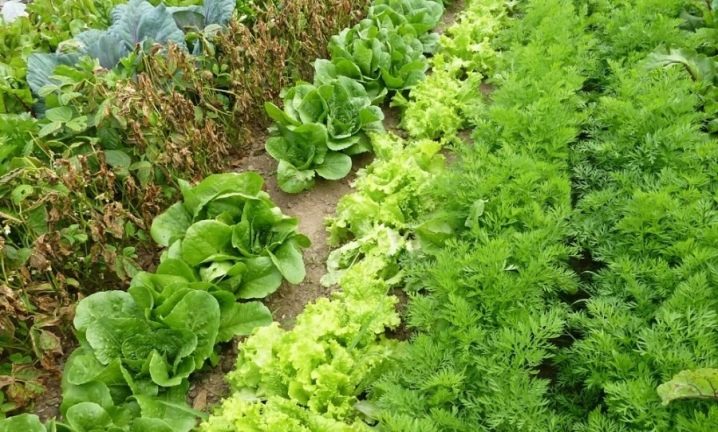
Pumpkin family
- Cucumbers... Dill helps to increase the period of fruiting, and its aroma also attracts ladybugs, which destroy pests. In turn, cucumbers do not interfere with the growth of spices and do not block the sunlight. Both plants need the same watering schedule. They can be placed at a distance of 10-15 cm from each other.
- Zucchini... The scent of dill attracts insects that pollinate the flowers of the pumpkin plant. This contributes to a good harvest. The optimal distance between different crops is from 20 cm.
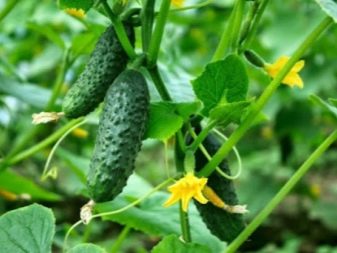
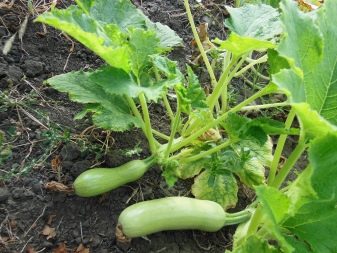
Legume family
A good neighbor will be beans - it tends to accumulate around itself nitrogen from the soil, which is necessary for the growth of dill. In turn, spreading umbrellas will protect young shoots from the sun.
You can also plant peas nearby, the scent of dill attracts ladybugs that feed on aphids.
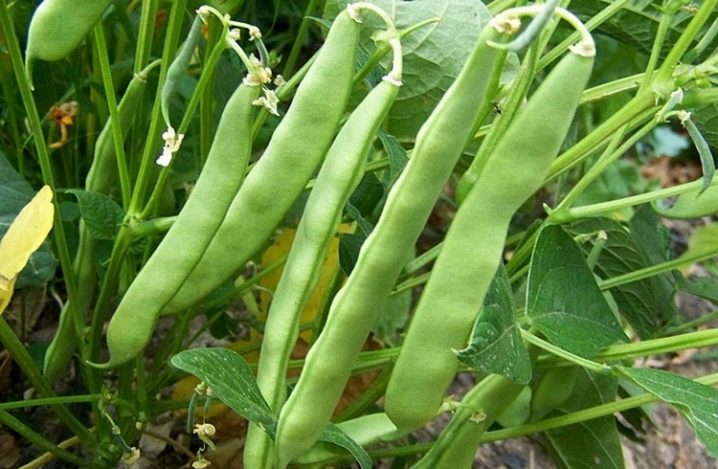
Cabbage family
- Broccoli... The fragrant aroma attracts insects that feed on pests, and also drives away moths and whites. The distance between broccoli and dill should be at least 30 cm.
- White cabbage... She does not need a lot of light, and in the shade of overgrown dill, heads of cabbage can be tied without problems. Also, a useful plant will repel insects.
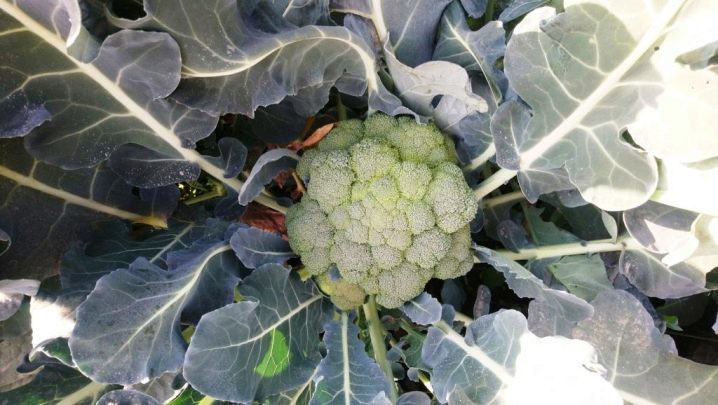
Onion family
Well suited as a neighbor. The pungent smell of onions drives away pests that eat dill. The spice with its spreading thickets provides protection from the sun. Dill also promotes the growth of the bulb, but the distance between them should be at least 15 cm.
Another plant from this family, garlic, has similar qualities.
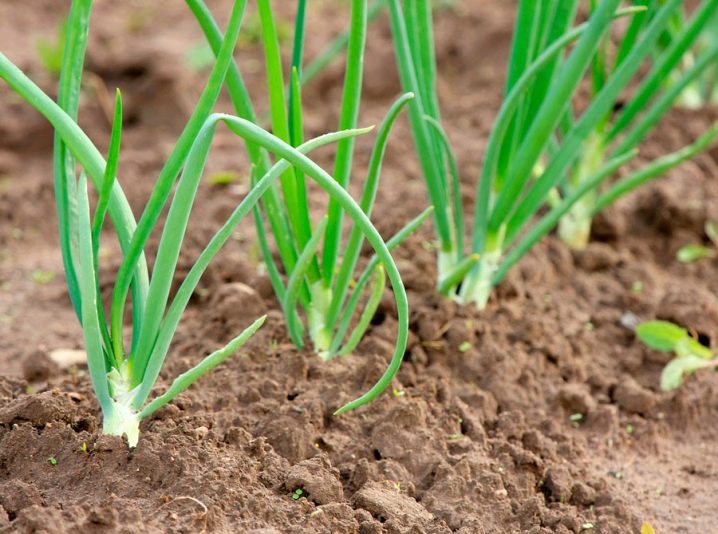
Nightshade family
- Tomatoes... Favorable neighborhood in planting improves the taste of tomatoes, in addition, the aroma of dill drives the garden scoop away, preventing it from laying eggs on the leaves. To prevent the plants from shading each other, you need to maintain a distance of 35 cm.
- Potato... It is better to place dill between the rows - there will be enough space for it, it will grow well and will exude an odor that is unpleasant for pests.
- Eggplant... Near them, the greens ripen quickly, protecting the slower neighbor from the sun's rays.


There are other plants that work well with dill. These include strawberries and mint, they can grow up to a close distance of about 30 cm and feel comfortable. Also, next to the beets there is a place for greens, dill has a positive effect on its taste. In addition, the root crop takes a long time to mature, so the spice will have time to grow without disturbing its neighbor.
Dill protects against a variety of pests that don't like its pungent odor. It scares off Colorado beetles, aphids, moths, white butterflies, ticks, slugs and snails... If your garden especially suffers from insects from this list, it is worth planting some greenery in the problem area.
Dill is able not only to drive away enemies, but also to attract pollinators to flowering plants.

Neutral options
There are other crops that can be planted in the same garden bed with spicy herbs. These plants go well together. They do not bring much benefit to each other, but they do not interfere, so they can be safely grown together. The following vegetables have this compatibility.
- Radish... Young sprouts hide in the shade of dill and ripen quickly without disturbing the greenery. A suitable distance is 10 cm.
- Pepper... Will be a good neighbor, there is usually enough free space between the bushes. Dill that grows nearby will attract pollinators and prevent aphids from taking root on the leaves.
- Pumpkin... It is also considered a suitable option, you can plant dill next to it. They will not interfere with each other, since pumpkins ripen for a long time, during which time the spice will have time to grow.
Unpretentious greens coexist well with most plants, are friends with different families and benefit them, or simply do not interfere with the normal development of seedlings.
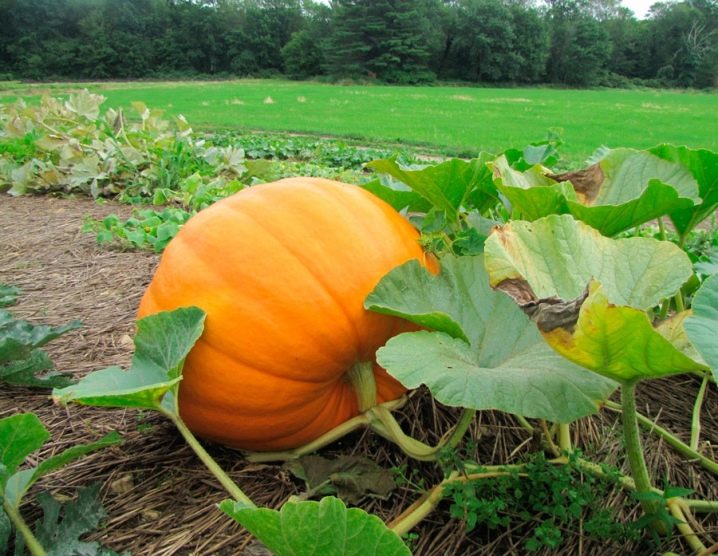
But there are some crops that you should not place dill next to - this will lead to negative consequences.
Unwanted neighborhood
Plants of the same species cannot be combined, this rule applies to all crops. Due to such a neighborhood, they will lack nutrients, since they need the same set of useful elements, weak seedlings will not gain strength and will die. In addition, crops have the same diseases and when attacked by bacteria or insect pests, the entire garden will be infected, which will lead to significant crop losses. Dill belongs to the umbrella family, among its relatives:
- parsley;
- parsnip;
- celery;
- carrot;
- caraway.
It is better to keep all these plants away from each other so that they feel comfortable, do not infect each other and do not get sick. The optimal distance is through one bed, then there will definitely be no harm.
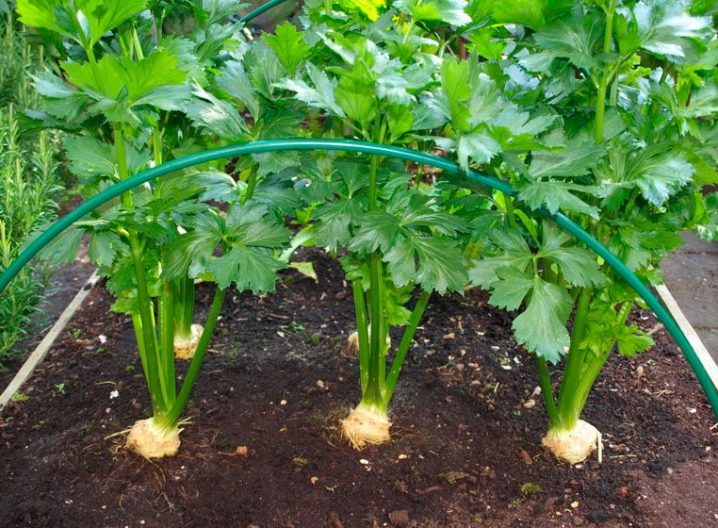
In addition to the relatives of dill, there are other crops that do not get along well with it.
- Sunflowers... Grow quickly, creating a shade, which negatively affects the condition of the dill.
- Corn... It prevents greens from getting enough sunlight, and also removes nutrients from the soil in large quantities.
- Basil... In close proximity, both spices acquire an unpleasant bitter taste. In addition, dill fly infestation of basil is possible.
- Watercress. These types of greens interfere with the growth of each other, so they should be located at a distance of at least 4 meters in the garden.
It is best to plan your planting in advance and make sure all crops have suitable neighbors. However, not all summer residents take the matter so seriously, in addition, dill often sprouts by itself, suddenly appearing where it was not expected at all.
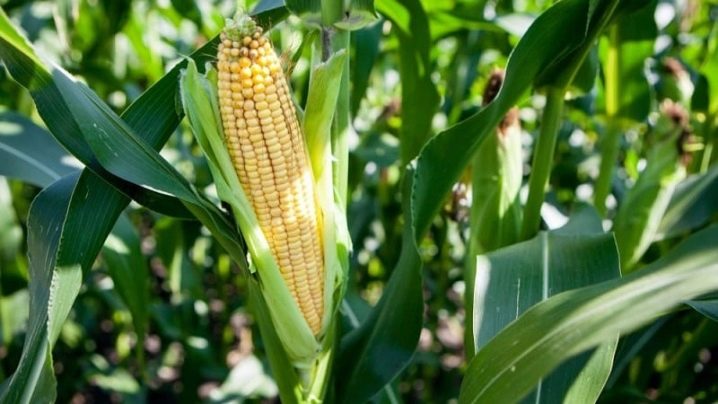
What to do if you make a mistake?
Young greens tolerate transplanting, so you can try to remove them in a more suitable place if it is important to save the bushes. Although this will not benefit the vegetation, and some specimens may die, most will take root and continue to grow.
Another option is to remove something by sacrificing less valuable crop. For example, if dill suddenly appeared on a carrot bed, you can pluck young greens, pulling them out right away from the roots, and use them to add to salads or other dishes.
In addition, the spice grows quickly, so you can choose a more suitable place and sow dill already with the onset of summer.
This can be done in the vacated territory, for example, if your radish has departed, and you do not plan to plant it again.
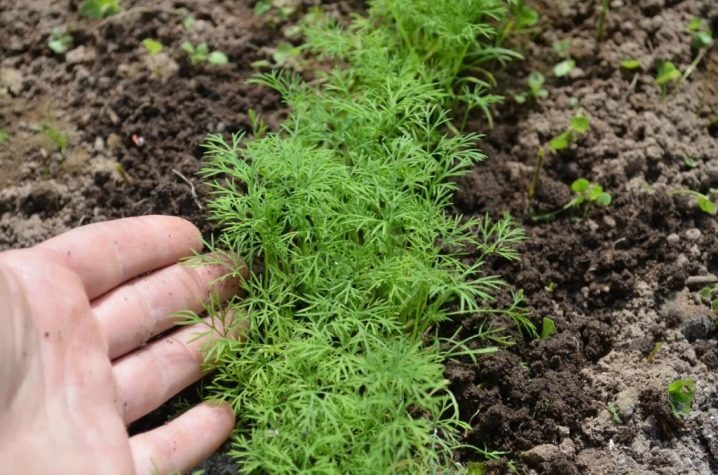
Useful Tips
Greens are unpretentious and easy to grow. But there are some guidelines to help you get fuller shrubs and a rich dill flavor.
- To develop, the sprouts need enough sun so that they can gain strength and turn into succulent shoots.... With this in mind, it is better to choose an open space for planting, where the shadow from larger shrubs does not fall.
- The soil must be loose enough so that air and moisture can freely enter the roots.... Neutral acidity is required for normal growth, otherwise the stems may turn red or yellow.
- If the soil is poor, it is necessary to apply fertilizers and top dressing in advance, so that dill can get enough nutrients.
- Often, greens are precipitated by pests. Dill often gets sick with powdery mildew, and if it begins to curl, it means that aphids have appeared. In this case, you cannot use chemicals, you need to select biological agents.
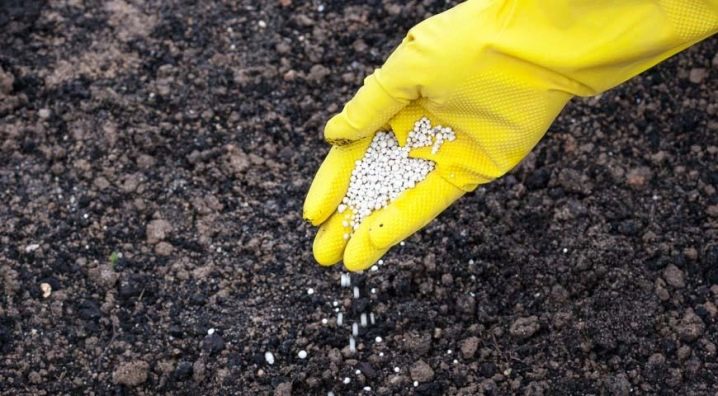
Do not forget to remember what grew in this place last year. Onions, garlic, tomatoes, cucumbers, cabbage, and potatoes are good precursors for dill. You should not plant it where other representatives of the umbrella family used to grow.
When choosing a place, it is worth considering the peculiarities of neighboring cultures. For example, if you decide to sow dill among strawberries, you need to focus primarily on the needs of the berry, since it is perennial, as opposed to annual greens.
Growing dill does not require much work, while the plant is rich in useful elements and will be useful in the diet. It is enough to provide a little space in the garden and follow simple recommendations to get a fragrant spice.
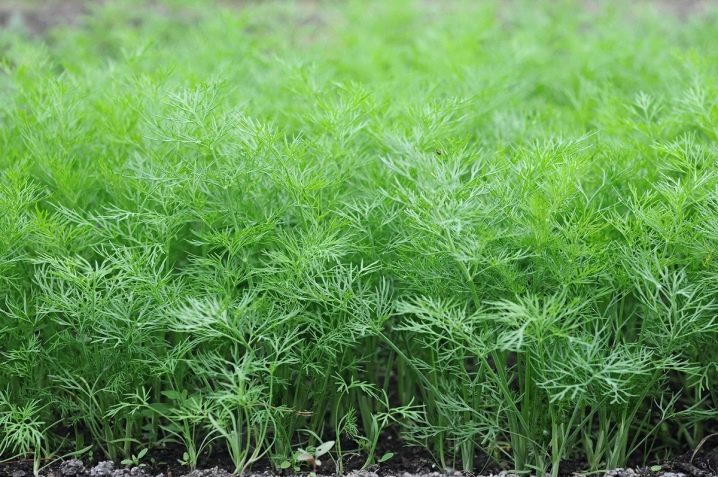













The comment was sent successfully.